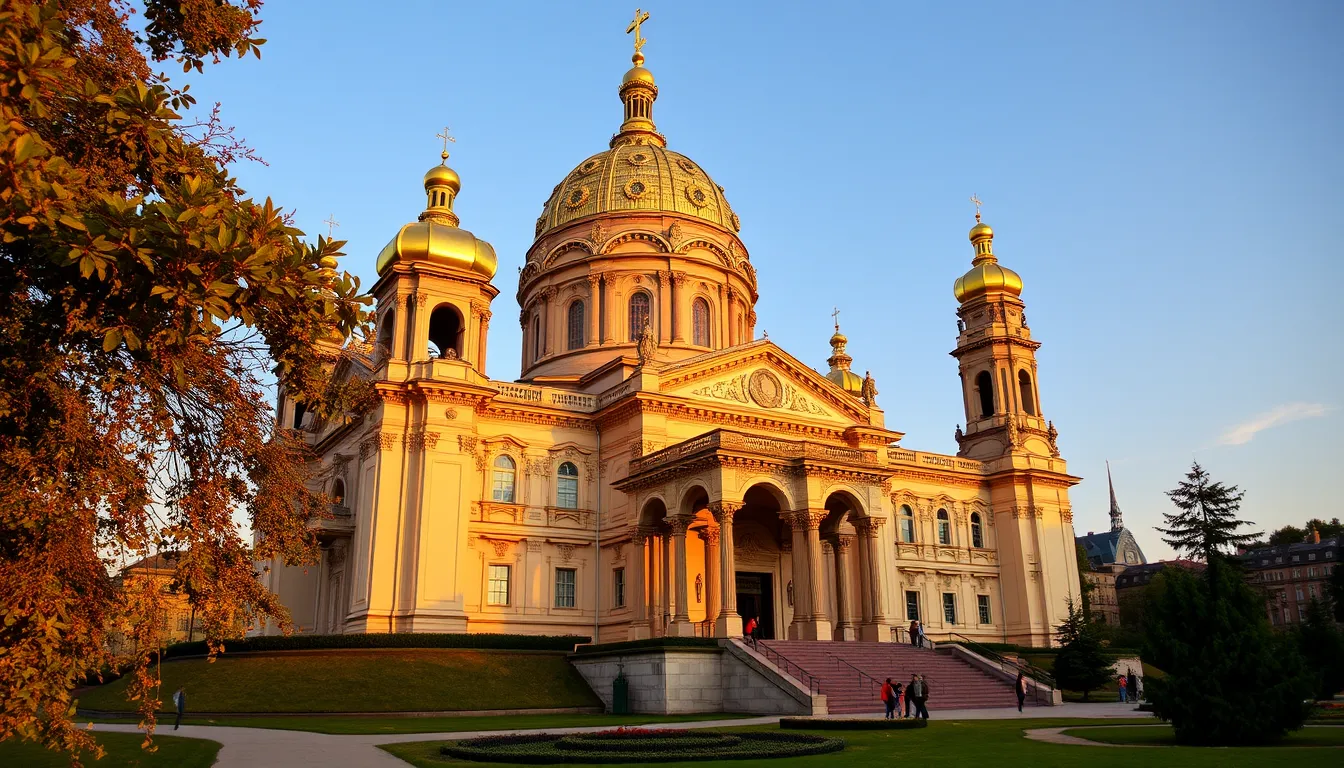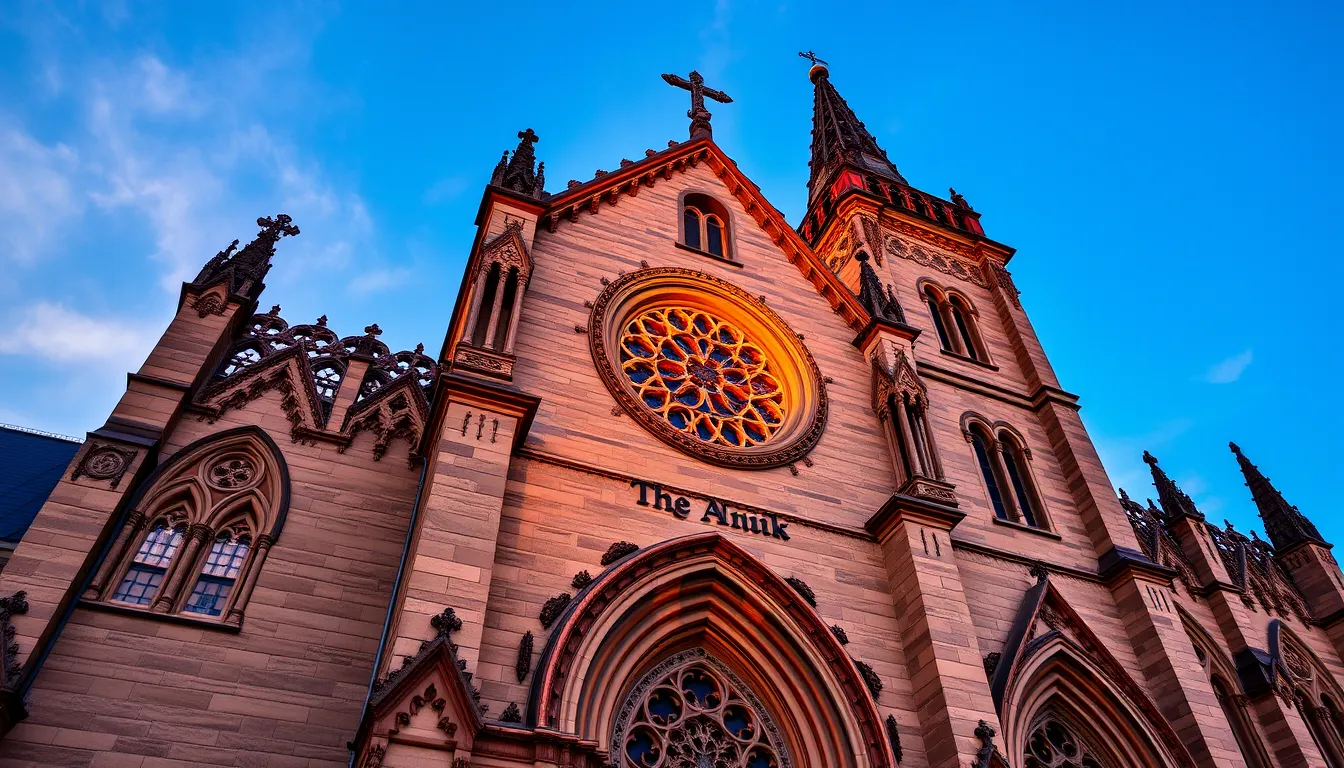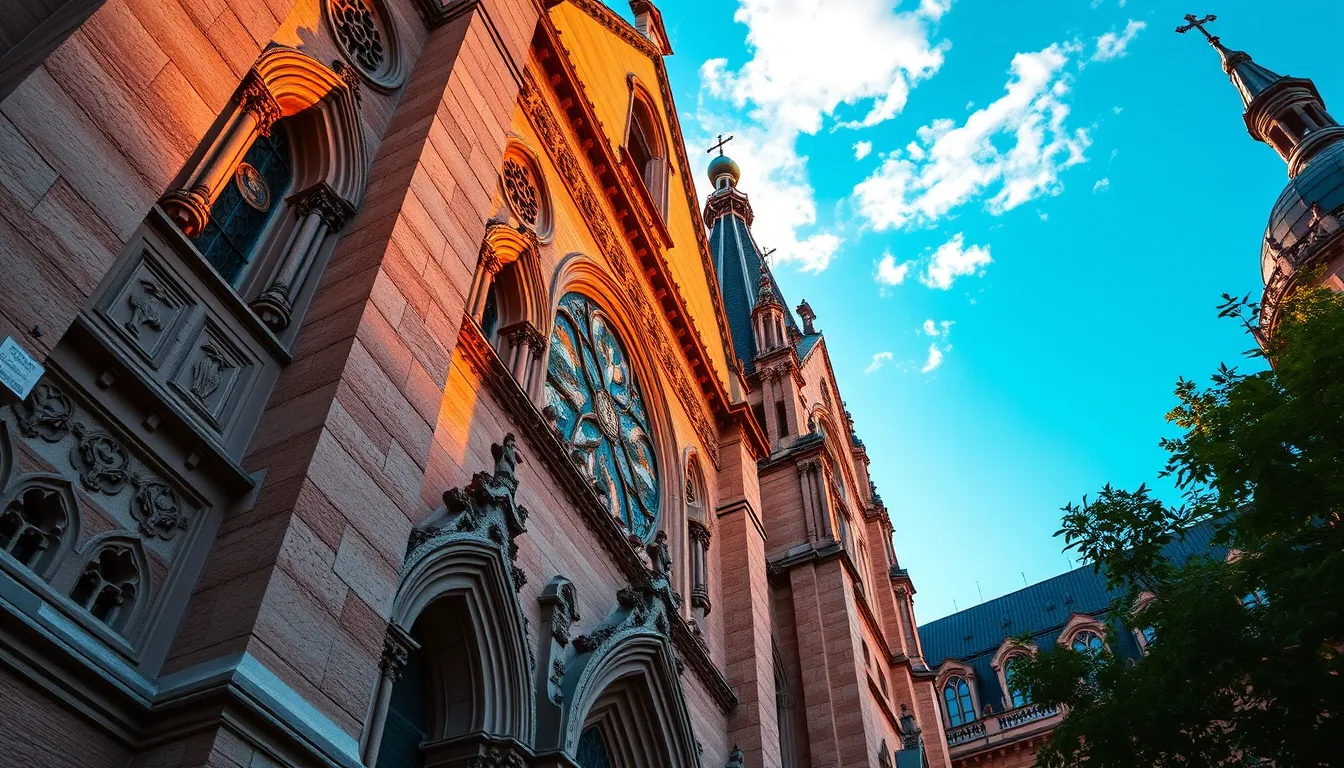Lviv is a city where the past and present beautifully intertwine, making it a treasure trove for architecture enthusiasts and tourists alike. Its rich history is reflected in its diverse architectural styles that range from Gothic and Renaissance to Baroque and Art Nouveau. As you stroll through the charming streets, you’ll encounter an array of landmarks that tell the story of the city’s cultural heritage and the many influences that have shaped it over centuries.
The city is a UNESCO World Heritage Site, recognized for its well-preserved historic center, which showcases over 2,000 years of architectural development. The buildings in Lviv boast intricate details and artistic flair, a testament to the skilled craftsmanship of the artisans of the region. Here are several architectural highlights that define Lviv’s heritage:
| Architectural Style | Notable Examples |
|---|---|
| Gothic | St. Mary’s Cathedral |
| Renaissance | The Palace of Counts Potocki |
| Baroque | Saint George’s Cathedral |
| Neoclassical | Lviv Opera House |
| Art Nouveau | The House of Scientists |
Each district of Lviv contributes to the city’s architectural tapestry. The highlight is undoubtedly the magnificent Rynok Square, surrounded by historical buildings that house cafés, boutiques, and galleries, inviting both locals and tourists to immerse themselves in its vibrant atmosphere. Furthermore, Lviv’s architectural heritage reflects a mosaic of cultures, with influences from Polish, Ukrainian, Austrian, and Jewish histories, making the city a confluence of traditions.
Walking through Lviv, you may feel as if you have stepped into a living museum. Each structure, from the towering façades to the quaint courtyards, has a story waiting to be uncovered. This architectural diversity not only enhances tourism but also instills a sense of pride among the locals, who continue to cherish and preserve their city’s unique character.
“Architecture is the mother of all arts. It is the great monument to our civilization.”
With its timeless charm and architectural marvels, Lviv serves as a captivating destination for those eager to experience the rich cultural landscape of Ukraine.
The High Castle and Its Historical Significance
Perched atop a picturesque hill, the High Castle offers some of the most breathtaking panoramic views of Lviv. Originally constructed in the 13th century, this landmark played a crucial role in the city’s defense during turbulent times. Although the castle now exists primarily as ruins, the remnants continue to captivate visitors with their historical tales and stunning vistas.
Throughout its history, the High Castle served various purposes, from a fortified royal residence to a strategic military stronghold. A significant part of Lviv’s architectural heritage, it became the site of numerous sieges and battles, reflecting the region’s tumultuous past. The castle’s strategic position allowed it to oversee the key pathways that connected different territories, making it indispensable for trade and communication.
Visitors today can explore the castle’s expansive grounds, where hiking paths wind through lush greenery, leading to the site of the former castle walls and citadel. The climb may be steep, but as you ascend, the reward is an uninterrupted view of Lviv’s charming skyline, with its mix of medieval and modern architecture. On a clear day, one can see far beyond the city’s borders, emphasizing Lviv’s historical significance as a crossroads of cultures and traditions.
In addition to the scenic views, the High Castle area is a popular destination for picnics and gatherings. Families and groups of friends often come here to enjoy the tranquility of the park, surrounded by history. In the evenings, the setting sun casts a golden hue across the city, creating an atmosphere that feels almost magical, drawing visitors back for a second glance.
The High Castle also serves as a reminder of Lviv’s resilience and ability to adapt through centuries of political and social changes. While the physical structure may have deteriorated over time, its historical significance remains firmly anchored within the collective memory of the city’s inhabitants. To delve deeper into Lviv’s rich past, a visit to this landmark is truly indispensable for history buffs and casual tourists alike.
As you explore the remnants of the High Castle, take a moment to appreciate the historical significance it holds as a symbol of strength and survival. Its presence resonates not only in the stones that remain but also in the hearts of those who cherish Lviv’s heritage. The High Castle, thus, stands tall as a testament to the indomitable spirit of a city that has seen countless eras while continuing to invite appreciation and admiration from around the world.
Lviv Opera House: A Cultural Gem
Designed by the eminent architect Zygmunt Gorgolewski, the Lviv Opera House stands as a stunning example of Neo-Renaissance architecture and is one of the most recognizable landmarks in the city. Completed in 1900, this cultural gem is not only a feast for the eyes but also a vital centerpiece of Lviv’s vibrant arts scene. Its grand façade, adorned with ornate sculptures and elaborate decorative elements, beckons visitors from afar, while its opulent interior captivates with rich details that reflect a time of artistic ambition and creativity.
As you approach the opera house, you’ll notice its majestic staircase leading up to the main entrance, which features numerous statues that embody various artistic figures, including allegorical representations of Comedy and Tragedy. The exterior is a dynamic mix of architectural elements that showcase the peak of early 20th-century design. The theater itself is flanked by large columns and crowned with an impressive roof, making it a striking silhouette against the skyline of Lviv.
Inside, the Lviv Opera House impresses with its luxurious interiors, which were inspired by the grand theaters of Europe, such as the famous La Scala in Milan. The concert hall, with a seating capacity of nearly 1,000, features exquisite frescoes and gilded moldings that transport you back to the days of high society performances. The sumptuous red velvet curtains and plush seating add to the ambiance, making every visit to a show feel like a special occasion.
The opera house has hosted a variety of performances, ranging from operatic masterpieces to ballet and orchestral concerts. Some notable works performed here include “Carmen” by Georges Bizet and “Swan Lake” by Pyotr Ilyich Tchaikovsky, showcasing both local talent and international artists. The theater is also home to the Lviv National Academic Opera and Ballet Theatre, which contributes to the cultural fabric of the city and attracts audiences from across the country.
For those interested in exploring the traditions of Ukrainian performing arts, the Lviv Opera House often presents programs and festivals showcasing folk music and dance, blending historical narratives with contemporary interpretations. Visitors can easily purchase tickets for performances, making a night at the opera a perfect addition to any Lviv itinerary.
Additionally, the opera house is not just a stage for performers but also a hub for tourism, drawing art lovers and culture enthusiasts alike. Guided tours are often available, allowing guests to learn more about the history of the building, its architectural significance, and the many renowned artists who have graced its stage. These tours provide unique insight into the artistic soul of Lviv and its commitment to preserving its rich cultural heritage.
As you soak in the atmosphere, you might also take a moment to appreciate the opera house’s role in the broader context of Lviv’s identity. The theater is a beacon of creativity, illuminating the city as a center for the arts, where melodies and narratives weave through the streets, capturing the spirit of its people. A visit to this stunning architectural wonder promises to be an unforgettable experience within the captivating landscape of Lviv.
Saint George’s Cathedral: A Masterpiece of Baroque Architecture

Saint George’s Cathedral, a true masterpiece of Baroque architecture, is one of Lviv’s most revered landmarks. Built between 1744 and 1761, this stunning cathedral serves as the principal church of the Ukrainian Greek Catholic Church. The architectural design was masterfully executed by architect Bernard Meretyn, whose vision infused the structure with grace and elegance, encapsulating the essence of Baroque artistry.
As you approach the cathedral, the first thing that strikes you is its impressive façade, which is adorned with intricately carved sculptures and stunning frescoes. The gleaming golden domes, a hallmark of Baroque design, sparkle under the sun, making the cathedral visible from various points throughout the city. This magnificent structure not only dominates the skyline of Lviv but also beckons visitors with its spiritual significance and architectural grandeur.
Stepping inside the cathedral, you are welcomed into a world of sublime beauty. The interior is resplendent with ornately decorated altars, frescoed ceilings, and elegant columns, reflecting the rich artistic heritage of the region. One of the most striking features is the high altar, a dazzling creation featuring meticulous woodwork and gilded decorations that capture the ethereal light filtering through stained glass windows. As you explore further, you’ll find several chapels dedicated to various saints, each with its unique artistic expression.
For visitors interested in the history and culture of Lviv, Saint George’s Cathedral is more than just a place of worship; it holds a significant place in the narrative of the city. The cathedral has witnessed numerous historic events, including the formal declaration of the Ukrainian Greek Catholic Church’s independence in 1989 and has stood as a symbol of faith and resilience for its parishioners. The presence of the cathedral also fosters a sense of community, as it organizes various religious and cultural events throughout the year, attracting both locals and tourists.
Surrounding the cathedral, the serene grounds are perfect for reflection and relaxation. The beautiful gardens, dotted with statues and fountains, provide a tranquil escape from the bustling city, inviting visitors to take a moment to appreciate the harmony of nature and architecture. Here, you can frequently find locals enjoying peaceful afternoons, an integral part of the city’s fabric.
Culturally, the cathedral plays a pivotal role in the identity of Lviv, contributing to the city’s long-standing tradition of religious tolerance and cultural exchange. As part of a UNESCO World Heritage Site, it reflects not only the religious dimensions of the city but also the broader historical narrative that shapes Lviv’s character. The preservation and reverence of this architectural treasure make it a must-visit for anyone interested in exploring Lviv’s landmarks.
Whether you’re an architecture aficionado, a history buff, or someone simply looking to explore the soulful spirit of Lviv, Saint George’s Cathedral is an essential stop on your journey. Its beauty and significance resonate with every visitor, offering insights into the artistic and spiritual legacy of this enchanting Ukrainian city.
Rynok Square: The Heart of the City
Rynok Square, often regarded as the heart of Lviv, is a vibrant hub where history, culture, and daily life converge. This bustling square, which literally translates to “Market Square,” dates back to the medieval period and has served as the main marketplace for centuries. Adorned with colorful façades and intricate architecture, Rynok Square is not only a feast for the eyes but also a dynamic center of social activity that showcases the city’s rich cultural heritage.
At the center of the square stands the impressive Town Hall, a beloved symbol of Lviv. Visitors can climb its tower for a breathtaking panoramic view of the historical city center, showcasing the beautifully preserved landmarks that characterize the area. The Town Hall, adorned with a clock and surrounded by vibrant street life, is a focal point for both locals and tourists, offering a glimpse into the city’s past and present.
The architecture surrounding Rynok Square is a delightful mix of styles, predominantly Renaissance and Baroque, which reflects Lviv’s historical significance as a melting pot of cultures. Each building has its own story to tell, adorned with unique elements from different periods. Some of the notable structures include:
| Building | Architectural Style | Notable Features |
|---|---|---|
| House of the Black Cambridge | Renaissance | Black facade with distinct Gothic elements |
| Potocki Palace | Neo-Renaissance | Grand staircase and lush garden |
| Wakhsman’s House | Baroque | Elaborate stucco decorations |
As you wander through the square, you’ll find an array of cafés and restaurants offering delicious local cuisine, perfect for taking a break and soaking in the atmosphere. Traditional dishes, such as varenyky (dumplings) and borscht (beet soup), are readily available, alongside a selection of fresh pastries and coffee from charming local shops. The square is also a fantastic spot for sampling Lviv’s famous coffee culture, with its numerous cafés inviting visitors to relax and enjoy a quiet moment amidst the hustle and bustle.
Rynok Square is not just a beautiful site; it is also a vital part of Lviv’s social and cultural fabric. Throughout the year, the square hosts numerous cultural events, festivals, and markets that draw visitors from near and far. During festive occasions, the square is transformed into a lively arena, filled with music, dance, and artisanal crafts, allowing visitors to immerse themselves in local traditions and celebrations.
In addition to its cultural significance, Rynok Square serves as a gateway to numerous other landmarks in Lviv. From here, visitors can easily stroll to nearby attractions such as the Armenian Quarter, the Dominican Church, and the picturesque cobblestone streets of the old city. This central location makes it an ideal spot to start an exploration of Lviv, where history and modern life beautifully coexist.
As the sun sets, the square is illuminated, showcasing the vibrant colors of its buildings and creating a romantic ambiance that enchants all who visit. It’s a place where the echoes of the past meet the energy of the present, making Rynok Square an indispensable part of any trip to Lviv. Whether you are admiring the architecture, savoring local delicacies, or simply enjoying the lively atmosphere, Rynok Square stands as a true testament to the spirit of this enchanting city.
The Armenian Quarter: A Testament to Cultural Diversity
The Armenian Quarter, known for its distinctive architecture and rich cultural tapestry, offers a glimpse into Lviv’s diverse heritage. Nestled just a short walk from Rynok Square, this charming district reflects the historical presence of the Armenian community in Lviv, which dates back to the 14th century. Once a vibrant hub for traders, artisans, and scholars, the quarter’s legacy is evident in its unique buildings and colorful atmosphere.
As you wander through the cobblestone streets, you’ll notice the striking blend of architectural styles. The buildings here often feature ornate wooden balconies, intricate doorways, and captivating decorative elements typical of Armenian culture. Many structures showcase vivid hues, giving the quarter a warm and inviting character. Notable landmarks within the district include:
| Landmark | Description |
|---|---|
| Armenian Cathedral of Lviv | A stunning example of Armenian architecture, this cathedral features a beautifully painted interior and is adorned with intricate woodwork. |
| The Armenian Church of St. James | Dating back to the 14th century, this church boasts impressive frescoes and a serene courtyard, providing a peaceful retreat in the bustling city. |
| Armenian Museum | A small but informative museum that showcases artifacts, manuscripts, and artwork reflecting the rich history and contributions of the Armenian community in Lviv. |
Among these landmarks, the Armenian Cathedral stands out as a highlight of the quarter. This architectural gem, built in the 14th century, boasts a stunningly decorated interior filled with vibrant frescoes and exquisite wood carvings. Visitors often find themselves captivated by the peaceful atmosphere within the cathedral, making it not only a place of worship but also a symbol of the enduring presence of the Armenian community in the city.
As you explore the Armenian Quarter, it’s impossible to ignore the rich cultural life that thrives here. The area is dotted with quaint cafes and shops that offer traditional Armenian cuisine and handicrafts, inviting you to savor a taste of this unique heritage.Delicious dishes such as khachapuri (cheese-filled bread) and kebabs entice visitors, while local artisans display their craftsmanship in the form of handmade jewelry and textiles, allowing you to take a piece of Lviv’s Armenian legacy home with you.
The quarter also serves as a gathering place for cultural events, including exhibitions, concerts, and festivals that highlight the city’s multicultural fabric. One can often find traditional music and dance performances celebrating Armenian culture, drawing both locals and tourists into the vibrant social life of the district.
In addition to the artistic and culinary offerings, the Armenian Quarter is a testament to Lviv’s historical narrative of coexistence and cultural exchange. It highlights how various communities, including Armenians, Poles, Jews, and Ukrainians, have shaped the city, creating a rich mosaic that continues to attract visitors interested in the diverse stories that Lviv has to tell. Each visit to this quaint part of the city opens a window to the past, inviting exploration and appreciation of the cultural diversity that defines Lviv.
The Armenian Quarter, with its enchanting architecture, rich culinary delights, and vibrant cultural life, stands as a testament to Lviv’s unique heritage and is a must-visit for anyone looking to experience the city’s multifaceted character. As you stroll through its picturesque streets, you’ll undoubtedly discover that this district is, at its heart, a celebration of the connections that weave Lviv’s diverse history together.


